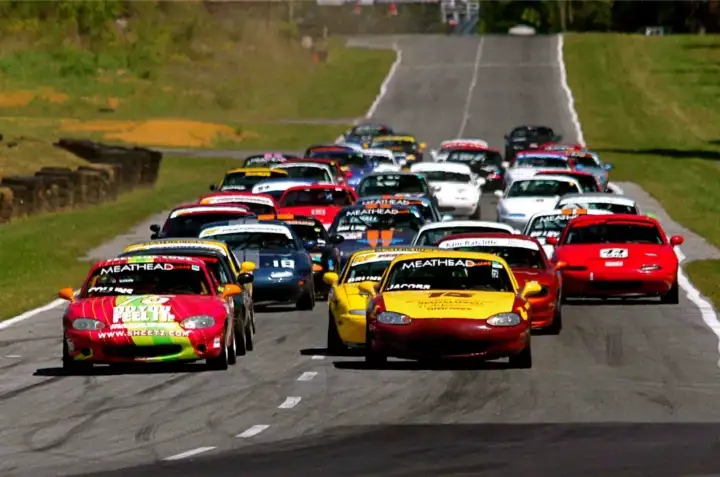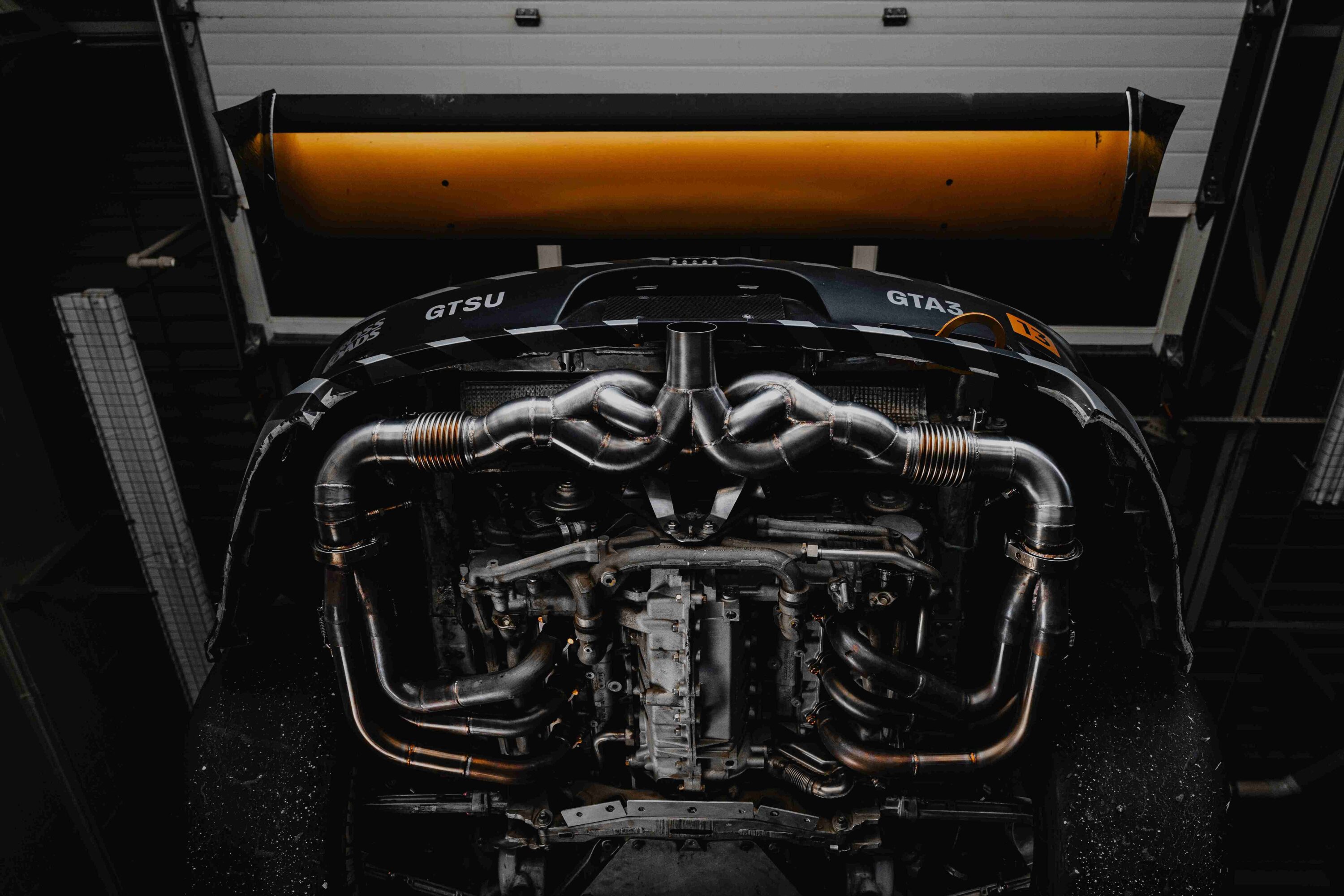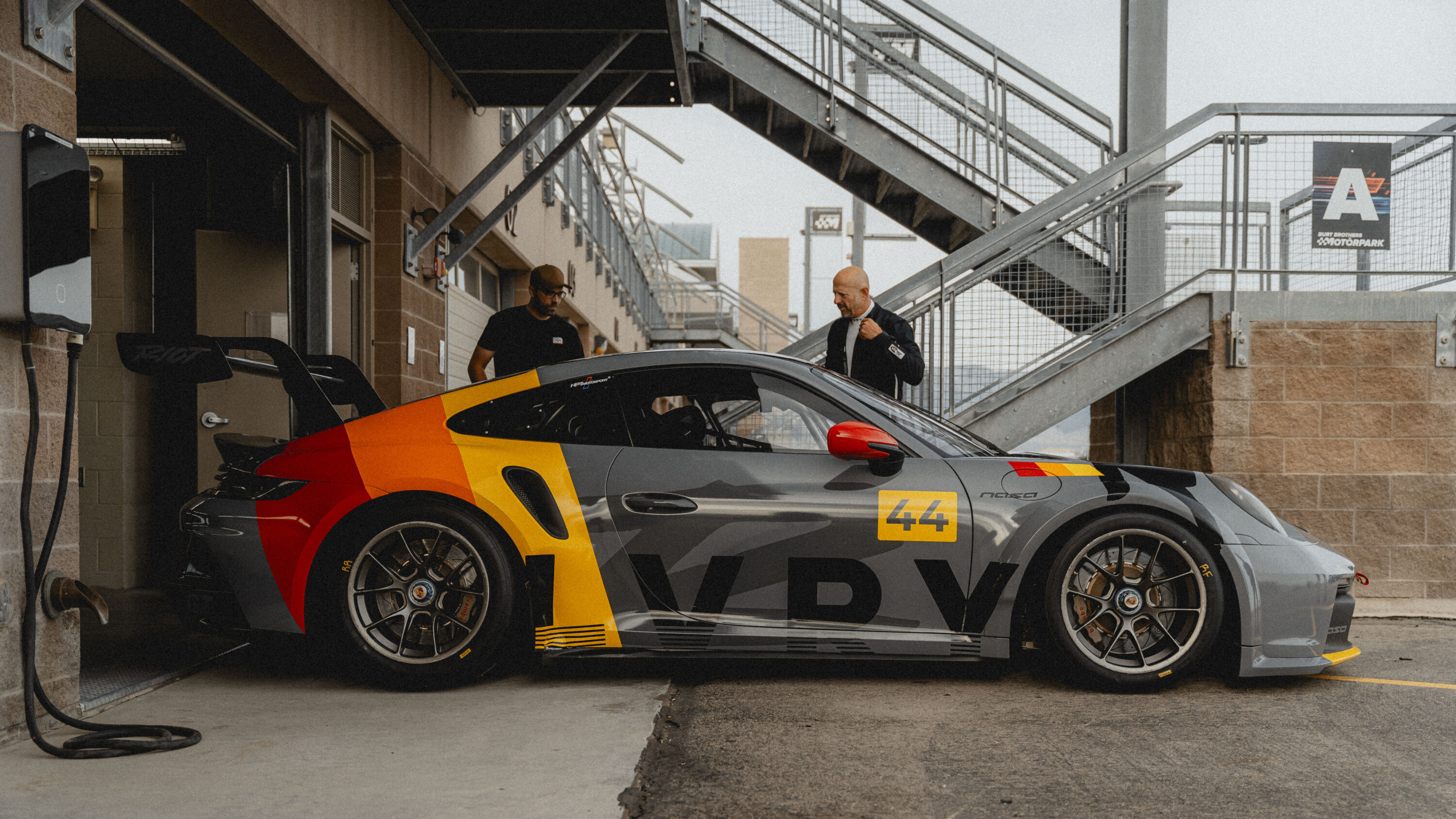A very common question from drivers progressing through the High Performance Driver Education (HPDE) program here at NASA Utah is:
“What car or class do you recommend I start racing in?”
I’ve evolved my answer over time, and depending on how much time is available to dig into a particular driver’s motivations, budget, and interests, I have a multitude of answers.
That said, I often start with this simple recommendation:
Look at the race results for your region. Pick the slowest class/car that you can put up with that still has a large field size.
Why? A few reasons come to mind.
More competition will be more fun.
If you’re alone in a class and don’t have other cars/drivers running a similar pace, then your races are going to turn into glorified lapping sessions in a hurry. You might have a few fun laps to start out a race, but you’re likely going to be screwing around with someone else’s race and once the field stretches out… you’ll just be lapping. Winning first in a class of one isn’t very rewarding.
Furthermore, if you are on-pace with other cars that have a decent class size, you’re likely going to be “That Driver” that annoys the rest of the field, because you’re just screwing with in-class racing.
Lastly — if you find a large enough field size, you’re likely to have a lively race, no matter what your pace is. Take a look at a Spec Miata field from last year. With a good contingent of Colorado drivers visiting to bolster our already-healthy local numbers, you can see that most drivers are separated by tenths of seconds or even just hundredths!

Even with the top-three leaving P4 and beyond far in the dust, every driver has a tight competitor. Those top-two just competed at NASA Nationals, by the way, and did quite well, and the only reason why P3 didn’t go was due to bad timing — just for some perspective.
More in-class competition makes you faster.
The difference of having a competitor just a dozen feet ahead and fifty feet ahead or more is night and day, especially when that car is in your class. That means that you should have a reasonable chance to drive as well or better than them — talk about motivation!
It sharpens your focus. Suddenly, practice sessions become more important for getting ‘in the groove’. Qualifying requires some preparation and tire planning, as well as teaming up with competitors to work together and get faster lap times. Ever hear of bump-drafting? Its a thing in Spec Miata and other classes, but even if it’s not for you or your class, the normal draft is valuable and you’re going to have to cooperate (i.e. not trying to pass at every opportunity) in order to qualify well. If you waste half of your 15-minute session dorking around for position, you’re unlikely to set a good time.
When the race comes, if your class is decently-sized, you either have the horde bearing down on you if you’re on pole… or you’re bringing up the rear and can capitalize on mid-field squabbles to pick up a few places. Or anything in-between.
“Slow” is relative; its really just a pseudonym for “More Affordable”
There are a few quotes that come to mind, here:
Speed costs money — how fast do you want to go?
Your car can be a combination of fast, reliable, and cheap — but you only get two.
These are classic quotes that have been handed down in motorsports lore for decades. And they’re true.
By going with the “slowest car/class you can stand”, you’re going to be able to afford more time on track. More time on track is more practice and more exposure to racing situations. There is a point where simply adding more time on track will not have a 1:1 payoff of increased driver skill… but it takes a while to get there. Regardless, practice and warm-up time are essential. After taking two years off, I was a whole two seconds slower per lap than my teammates in the 2022 NASA 6-Hour Enduro, on average, and that was us driving our ‘comfortable’ paces.
“Slow” for you might be a Spec Miata or it might be a Spec Boxster or E46… because you might have started track driving in a Porsche 991 GT3, or your daily-driver BRZ or Supra. The point is to get into a car that doesn’t overwhelm you with go-power and has relatively affordable parts available.
If you pick a sizable class and you make friends with your competitors (you should), then your spare parts bin just got a whole lot bigger! I can’t count the number of times that I’ve borrowed or lent a part, a tool, or a hand in an effort to keep all of the cars on-track. You’re going to be able to ask questions of drivers who actually know about your car… because they race the same car!
Lastly — back to the parts bin and speed costing money: I did the math and to move from Spec Miata to Spec Boxster (because I do miss racing with the Porsche clubs), the costs go up by 2–2.5x for consumables. Those are the things you use up just by driving and having zero driver or mechanical failures: tires and brake pads/rotors, mostly, but also projecting out the inevitable engine and transmission rebuilds.
If you can drive a “slow” car fast, you can drive a “fast” car fast.
My brother and I will remind drivers going through the HPDE program that everyone is already a pro at mashing the gas pedal to the floor. The art and skill of racing comes into play in the corners. So by getting a “slow” car, you’re going to feel the impact of every single additional MPH of speed you carry through a corner. In a faster car, you’re not going to notice that incremental improvement as much.
Some drivers get frustrated with the slow cars, sell theirs, and buy some hotrod in a class of one because they want to win. But what have they won? They’re now “That Driver” for the faster classes, spending a lot more money, and probably pitching a good chunk of driver development out of the window.
As I and my fellow instructor/racer friends who drive “slow” cars work with drivers in fast cars, nary a weekend goes by where we don’t surprise a colleague who asks us to hop in their faster car and give them setup feedback (or whatever). We’ll crank out laps close to or faster than their fastest lap ever… and we’re driving at 7/10ths of our maximal effort!
This is no humble brag — its just a fact. I will disclose that, at the time of this writing, I’m out of practice (refer back to how time on track matters) due to having to sell my car for a couple of years, so I’m not often the guy who is ripping out a flyer at 7/10ths. But I have before and I will again.
So What? Take this with a grain of salt.
The whole point of this sport (to me) is to have fun, so you should do you. Take your time and, if you can, go drive a few cars that are within a reasonable budget for you and see how you like them. Miatas are notoriously hard to fit into and mid-engine cars like to pirouette like ballerinas. You’re going to spend way too much money on the car and it’s maintenance to not fully enjoy yourself.
That said — beware of the ‘bastard child’ car. You know the one I’m talking about. It’s that car that seems to change hands a lot. It sounds mean, it’s fast, it’s unique… but it’s in a class of one (or poorly-suited to the class it’s required to race in). Every owner seems to think it’s worth more than the pavement it drives on and parts are a royal pain to find. It’s hard to sell when you’re done with it.
So long as you pick a car that is reasonably well-supported — either locally or regionally — you’re going to be able to enjoy your time with it and offload it without much drama. When it came time to sell my Porsche 944 Spec, the car had to be shipped to Ohio, but it sold within 30 days in the dead of winter. 944 Spec has some hot-spots across the country, just not in Utah, unfortunately. After a few years of dwindling class size, I knew it was time to move on.
Whatever you decide to do, I hope you get the enjoyment you’re looking for. The ‘right car’ is just a little different for everyone.







